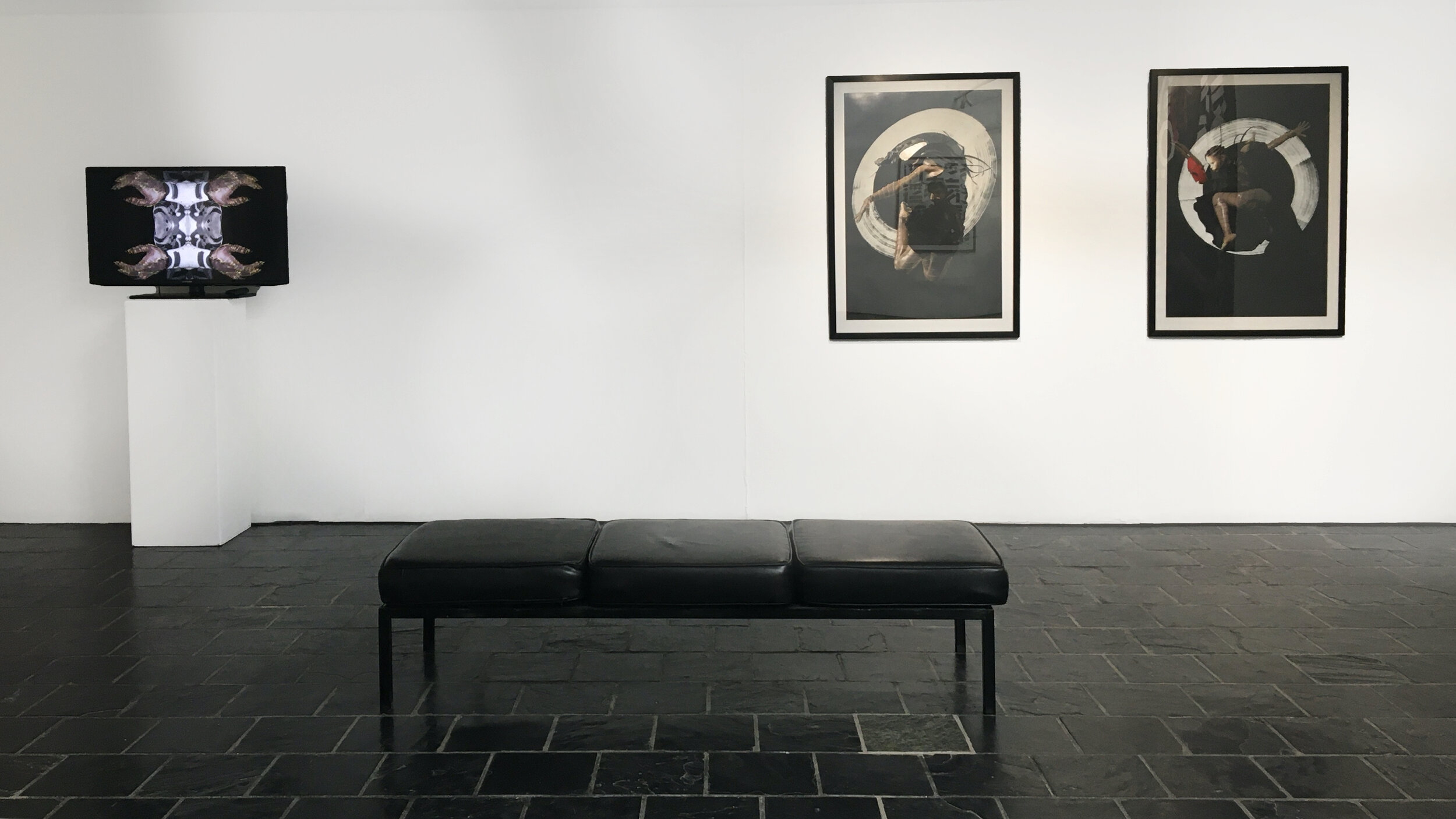Natal tongue
Review by Lucia Gcinga
Review of King Debs’ exhibition “Bokamoso (Future)” by Lucia Gcingca originally published on ArtThrob
Installation view of Bokamoso by King Debs, AVA Main Gallery, 2020
The 4th of March 2020. The calendar I googled foggily reminded my headline-weary cranium that it was a Wednesday, a few days short of an epoch ago. It was an ominously calm day when Cape Town’s feral winds had kindly resolved to refrain from their brutal chorus of howls and give us a long awaited intermission. I took this opportunity to look at the multi talented, multimedia artist, King Debs’ exhibition, ‘Bokamoso(Future)’.
Unwittingly I walked into the renowned Association for Visual Arts (AVA) gallery for what was to be one of my last times out in the world that I had come to know carnally. Upon my entrance, my gaze was apprehended by the bold glyphs scrolled on the AVA’s facade. This alphabet was constructed by King Debs as a way to transpose primordial Bantu proverbs, which habitually reside in the prolific tapestry that is the African oral tradition. He uses his script to write in Setswana as a way of “…exploring, (un)learning and unpacking” his natal tongue.
King Debs was born in the North-West Province town of Mahikeng, formerly Mafikeng, and grew up in Tshwane where he graduated from the Tshwane University of Technology with a Bachelor’s Degree in Multimedia Design, in 2010. Although his childhood and his Tswana roots are heirlooms which drape his work throughout its multiple dimensions; he lists his main influences as being the many courageous liberation fighters who sacrificed their lives for us to be here today. For King Debs, these include activists such as Chris Hani, Lumumba, Kenyatta, Garvey, and Sobukwe.
King Debs, Untitled A002, 2020. 3D CGI, digital print on archival paper, edition of 5, 119 x 84 cm
This latest exhibition is largely informed by the teachings of Steven Bantu Biko and his role in the liberation movement. “I referenced Azania, which Biko used as a protest name for South Africa, and I attempted to synthesize it visually.” The Azania he refers to here is purely cognitive at this point in time. “The idea that Biko, and other thought leaders augmented an alternative version of South Africa using their minds was for me one of the best acts of striving for freedom.” It is this sense of Azania he wants to transform from the cerebral to the physical domain.
One of the mediums he employs with significant dexterity is computer-generated imagery (CGI), often working across several computers and multiple operating systems to create one image.In Ditau , we are confronted by the gaze of an ultra realistic goddess clad in a black robe. Behind her are the words, “Ditau ga di adimane meno”, “Lions don’t lend each other teeth.” This is a militant reference point for Azania as it means that one must always be equipped for war. The struggle for freedom has its casualties, both spiritually and physically.
King Debs, Yo o kwa Legoding (Thou art in heaven), 2018. 3D CGI, digital print on archival paper, edition of 5, 59 x 42 cm
In an attempt to decipher what it means to be human in the age of the internet, he crafts hyper realistic portraits of envisioned Bantu deities. I was besieged by a bevy of these black and beautiful idols as I entered the AVA’s main gallery, where I was instantly transported to an Afro-futuristic amphitheatre. Where godheads, christened with names like Kitso (knowledge); Khumo (wealth) and Kgaka gazed from their respective frames. Their Tswana names, all nods to the artist’s roots, which flow in an unyielding current throughout the work.
One deity that stands out is the black robed Kgaka, whose fixed gaze glares at you from between a dissected Yohure mask. These masks are used by the Yohure tribe of Côte d’Ivoire to come to terms with a death in the village, they represent a spirit. Which makes sense considering that scrolled behind her, in King Deb’s own script, is a Setswana proverb which states, “Kgaka e ntsho e fofa, mebala re e bona e sule”. Which can be loosely translated to, “Someone’s good deeds are usually recognised when they have passed on.” The fractured mask bleeds flowers, symbolising a catharsis within the spirit.
King Debs, Kgaka, 2020. 3D CGI, digital print on textured suede wallpaper, 303 x 222 cm
While it’s easy for us as an audience to situate his work under the more familiar umbrella of Afrofuturism, because it points to a bigger discourse we need to have about Africa and the future.The artist, however, refers to it as Posthumanist or Transhumanist as he finds the term Afrofuturism to be restrictive and imposed by the west. For him it’s about, “… learning, unlearning, and redefining the Afro narrative” thus the nature of his work speaks to the otherness of the black diaspora.
The script is flipped as the viewer finds themselves being transformed to the subject as the deities’ fiery yet indignant glares which encase them, arousing a mood of reverence and quiet contemplation.




